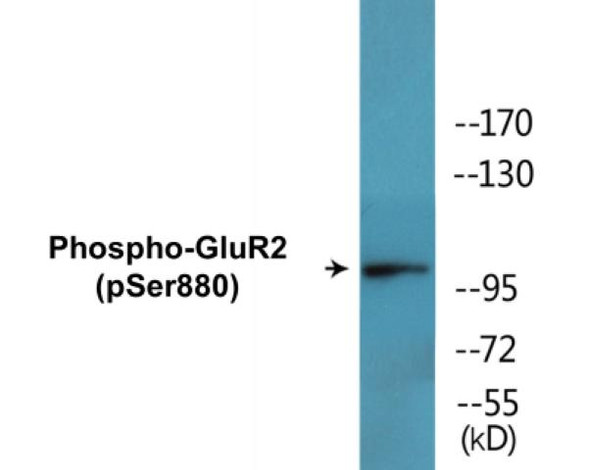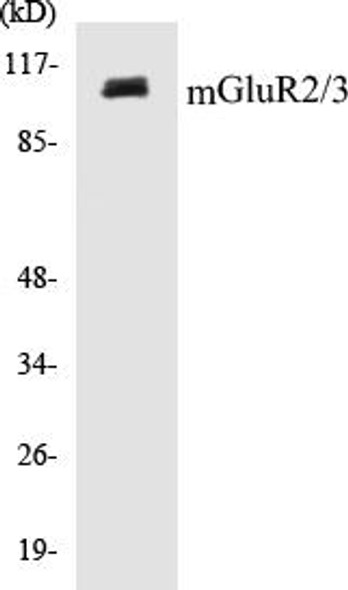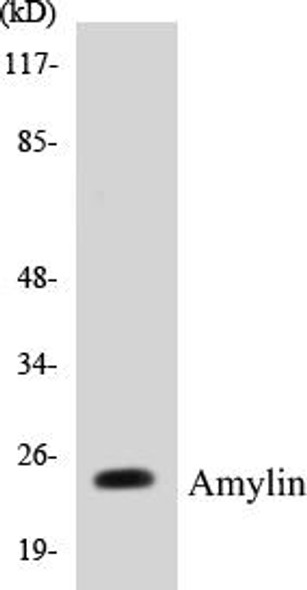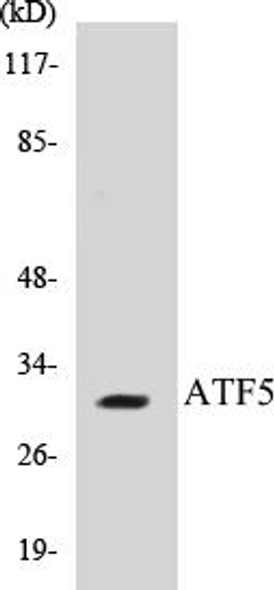Description
GluR2 Colorimetric Cell-Based ELISA Kit
The GLUR2 Colorimetric Cell-Based ELISA Kit from Assay Genie is a cutting-edge tool for researchers seeking to detect and quantify GLUR2 levels in cell samples. This kit offers high sensitivity and specificity, providing accurate and reliable results for a variety of research applications.GLUR2, a subunit of the AMPA receptor, is a key player in synaptic plasticity and excitatory neurotransmission in the brain. Dysregulation of GLUR2 has been implicated in conditions such as epilepsy, Alzheimer's disease, and mood disorders.
By measuring GLUR2 levels in cell samples, researchers can gain valuable insights into the mechanisms underlying these neurological disorders and potentially identify new therapeutic targets.With its user-friendly protocol and quick assay time, the GLUR2 Colorimetric Cell-Based ELISA Kit is an essential tool for researchers studying synaptic function and neurodegenerative diseases. Trust Assay Genie for accurate and reliable results in your research endeavors.
| Product Name: | GluR2 Colorimetric Cell-Based ELISA |
| Product Code: | CBCAB00305 |
| ELISA Type: | Cell-Based |
| Target: | GluR2 |
| Reactivity: | Human, Mouse, Rat |
| Dynamic Range: | > 5000 Cells |
| Detection Method: | Colorimetric 450 nmStorage/Stability:4°C/6 Months |
| Format: | 96-Well Microplate |
The GluR2 Colorimetric Cell-Based ELISA Kit is a convenient, lysate-free, high throughput and sensitive assay kit that can detect GluR2 protein expression profile in cells. The kit can be used for measuring the relative amounts of GluR2 in cultured cells as well as screening for the effects that various treatments, inhibitors (ie siRNA or chemicals), or activators have on GluR2.
Qualitative determination of GluR2 concentration is achieved by an indirect ELISA format. In essence, GluR2 is captured by GluR2-specific primary antibodies while the HRP-conjugated secondary antibodies bind the Fc region of the primary antibody. Through this binding, the HRP enzyme conjugated to the secondary antibody can catalyze a colorimetric reaction upon substrate addition. Due to the qualitative nature of the Cell-Based ELISA, multiple normalization methods are needed:
| 1. | A monoclonal antibody specific for human GAPDH is included to serve as an internal positive control in normalizing the target absorbance values. |
| 2. | Following the colorimetric measurement of HRP activity via substrate addition, the Crystal Violet whole-cell staining method may be used to determine cell density. After staining, the results can be analysed by normalizing the absorbance values to cell amounts, by which the plating difference can be adjusted. |
| Database Information: | Gene ID: 2891, UniProt ID: P42262, OMIM: 138247, Unigene: Hs.32763 |
| Gene Symbol: | GRIA2 |
| Sub Type: | None |
| UniProt Protein Function: | GluR2: an integral membrane protein belonging to the glutamate-gated ion channel family. L-glutamate (Glu) acts as an excitatory neurotransmitter at many synapses in the central nervous system. Glutamate receptors are heteromeric protein complexes with multiple subunits, each possessing transmembrane regions, and all arranged to form a ligand-gated ion channel. The postsynaptic actions of Glu are mediated by a variety of receptors that are named according to their selective agonists. This receptor binds AMPA(quisqualate) > glutamate > kainate. Each of the four GluR proteins (GRIA1-4) include flip and flop isoforms generated by alternative RNA splicing. |
| UniProt Protein Details: | Protein type:Channel, calcium; Membrane protein, integral; Membrane protein, multi-pass; Channel, ligand-gated Chromosomal Location of Human Ortholog: 4q32.1 Cellular Component: cell junction; endoplasmic reticulum membrane; integral to plasma membrane; plasma membrane; postsynaptic membrane Molecular Function:alpha-amino-3-hydroxy-5-methyl-4-isoxazole propionate selective glutamate receptor activity; excitatory extracellular ligand-gated ion channel activity; extracellular-glutamate-gated ion channel activity; ionotropic glutamate receptor activity; protein binding Biological Process: ionotropic glutamate receptor signaling pathway; signal transduction; synaptic transmission |
| NCBI Summary: | Glutamate receptors are the predominant excitatory neurotransmitter receptors in the mammalian brain and are activated in a variety of normal neurophysiologic processes. This gene product belongs to a family of glutamate receptors that are sensitive to alpha-amino-3-hydroxy-5-methyl-4-isoxazole propionate (AMPA), and function as ligand-activated cation channels. These channels are assembled from 4 related subunits, GRIA1-4. The subunit encoded by this gene (GRIA2) is subject to RNA editing (CAG->CGG; Q->R) within the second transmembrane domain, which is thought to render the channel impermeable to Ca(2+). Human and animal studies suggest that pre-mRNA editing is essential for brain function, and defective GRIA2 RNA editing at the Q/R site may be relevant to amyotrophic lateral sclerosis (ALS) etiology. Alternative splicing, resulting in transcript variants encoding different isoforms, (including the flip and flop isoforms that vary in their signal transduction properties), has been noted for this gene. [provided by RefSeq, Jul 2008] |
| UniProt Code: | P42262 |
| NCBI GenInfo Identifier: | 23831146 |
| NCBI Gene ID: | 2891 |
| NCBI Accession: | P42262.3 |
| UniProt Secondary Accession: | P42262,Q96FP6, A8MT92, I6L997, |
| UniProt Related Accession: | P42262 |
| Molecular Weight: | 93,775 Da |
| NCBI Full Name: | Glutamate receptor 2 |
| NCBI Synonym Full Names: | glutamate ionotropic receptor AMPA type subunit 2 |
| NCBI Official Symbol: | GRIA2 |
| NCBI Official Synonym Symbols: | GLUR2; GLURB; GluA2; HBGR2; GluR-K2 |
| NCBI Protein Information: | glutamate receptor 2 |
| UniProt Protein Name: | Glutamate receptor 2 |
| UniProt Synonym Protein Names: | AMPA-selective glutamate receptor 2; GluR-B; GluR-K2; Glutamate receptor ionotropic, AMPA 2; GluA2 |
| Protein Family: | Glutamate receptor |
| UniProt Gene Name: | GRIA2 |
| UniProt Entry Name: | GRIA2_HUMAN |
| Component | Quantity |
| 96-Well Cell Culture Clear-Bottom Microplate | 2 plates |
| 10X TBS | 24 mL |
| Quenching Buffer | 24 mL |
| Blocking Buffer | 50 mL |
| 15X Wash Buffer | 50 mL |
| Primary Antibody Diluent | 12 mL |
| 100x Anti-Phospho Target Antibody | 60 µL |
| 100x Anti-Target Antibody | 60 µL |
| Anti-GAPDH Antibody | 60 µL |
| HRP-Conjugated Anti-Rabbit IgG Antibody | 12 mL |
| HRP-Conjugated Anti-Mouse IgG Antibody | 12 mL |
| SDS Solution | 12 mL |
| Stop Solution | 24 mL |
| Ready-to-Use Substrate | 12 mL |
| Crystal Violet Solution | 12 mL |
| Adhesive Plate Seals | 2 seals |
The following materials and/or equipment are NOT provided in this kit but are necessary to successfully conduct the experiment:
- Microplate reader able to measure absorbance at 450 nm and/or 595 nm for Crystal Violet Cell Staining (Optional)
- Micropipettes with capability of measuring volumes ranging from 1 µL to 1 ml
- 37% formaldehyde (Sigma Cat# F-8775) or formaldehyde from other sources
- Squirt bottle, manifold dispenser, multichannel pipette reservoir or automated microplate washer
- Graph paper or computer software capable of generating or displaying logarithmic functions
- Absorbent papers or vacuum aspirator
- Test tubes or microfuge tubes capable of storing ≥1 ml
- Poly-L-Lysine (Sigma Cat# P4832 for suspension cells)
- Orbital shaker (optional)
- Deionized or sterile water
*Note: Protocols are specific to each batch/lot. For the correct instructions please follow the protocol included in your kit.
| Step | Procedure |
| 1. | Seed 200 µL of 20,000 adherent cells in culture medium in each well of a 96-well plate. The plates included in the kit are sterile and treated for cell culture. For suspension cells and loosely attached cells, coat the plates with 100 µL of 10 µg/ml Poly-L-Lysine (not included) to each well of a 96-well plate for 30 minutes at 37°C prior to adding cells. |
| 2. | Incubate the cells for overnight at 37°C, 5% CO2. |
| 3. | Treat the cells as desired. |
| 4. | Remove the cell culture medium and rinse with 200 µL of 1x TBS, twice. |
| 5. | Fix the cells by incubating with 100 µL of Fixing Solution for 20 minutes at room temperature. The 4% formaldehyde is used for adherent cells and 8% formaldehyde is used for suspension cells and loosely attached cells. |
| 6. | Remove the Fixing Solution and wash the plate 3 times with 200 µL 1x Wash Buffer for five minutes each time with gentle shaking on the orbital shaker. The plate can be stored at 4°C for a week. |
| 7. | Add 100 µL of Quenching Buffer and incubate for 20 minutes at room temperature. |
| 8. | Wash the plate 3 times with 1x Wash Buffer for 5 minutes each time. |
| 9. | Add 200 µL of Blocking Buffer and incubate for 1 hour at room temperature. |
| 10. | Wash 3 times with 200 µL of 1x Wash Buffer for 5 minutes each time. |
| 11. | Add 50 µL of 1x primary antibodies (Anti-GluR2 Antibody and/or Anti-GAPDH Antibody) to the corresponding wells, cover with Parafilm and incubate for 16 hours (overnight) at 4°C. If the target expression is known to be high, incubate for 2 hours at room temperature. |
| 12. | Wash 3 times with 200 µL of 1x Wash Buffer for 5 minutes each time. |
| 13. | Add 50 µL of 1x secondary antibodies (HRP-Conjugated AntiRabbit IgG Antibody or HRP-Conjugated Anti-Mouse IgG Antibody) to corresponding wells and incubate for 1.5 hours at room temperature. |
| 14. | Wash 3 times with 200 µL of 1x Wash Buffer for 5 minutes each time. |
| 15. | Add 50 µL of Ready-to-Use Substrate to each well and incubate for 30 minutes at room temperature in the dark. |
| 16. | Add 50 µL of Stop Solution to each well and read OD at 450 nm immediately using the microplate reader. |
(Additional Crystal Violet staining may be performed if desired – details of this may be found in the kit technical manual.)






